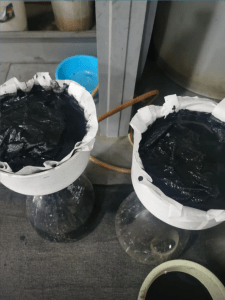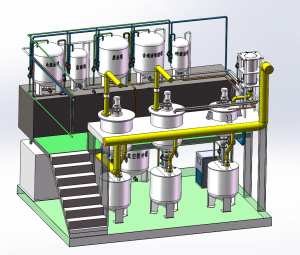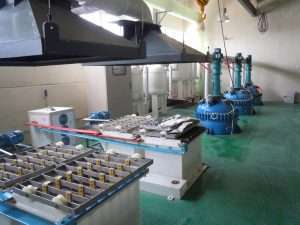Call us now:
What is the process of refining gold?
First off, my answer is a bit long, but if you will bear with me I'm fairly sure it will be quite informative.
Let's begin with Refining. This is the process of removing impurities from Gold. Usually refineries buy what is known as Dore Gold (rough or impure bricks of Gold Smelted on site) from primary producers such as Gold Mining and Extraction operations. They also buy high grade concentrates. Gold content varies from 60% to 95% by mass.
Typically there are 2 main methods of refining in use currently (even though others are possible). The first is reduce the impure Gold and/or Concentrates to a molten state by Smelting it with Fluxes. Chlorine Gas is then passed through the molten mix and reacts with the molten Cationic Metals in order of their reactivity. This is known as the Chloride Process and was originally developed and Patented in South Africa by Rand Refineries.
A chemistry text or search will give you further information on Metal Reactivities. The metals come out of the Molten Gold as Chlorides, such as Zinc Chloride, Iron Chloride, Silver Chloride and finally Gold Chloride at which point the process is stopped. The purified Gold (Usually 99% to 99.9% or 24 carat) is either cast directly into brick form of various sizes for sale, or cast into flat plates known as Anodes.
The production of Anodes is for further purification of the Gold by Electrolytic Plating or Deposition (which forms the second major refining process). Gold Anodes are immersed in a solution of either Sodium Cyanide or Aqua Regea (a mixture of Hydrochloric Acid and Nitric Acid). The Gold Anodes are placed opposite a Starter Cathode of pure Gold, and a specific electric potential applied across the Anodes and Cathode.
The Anode Gold passes into solution as either Gold Cyanate or Gold Chloride and is plated onto the Starter Cathodes as pure Gold, leaving the impurities as precipitates in the Electrolytic Cells. This Gold is typically 99.99% purity and is known as “Four 9's” Gold. This is usually sold after Smelting, Casting and Shaping into Polished Bricks of Bullion Gold (the nice shiny bricks we see on TV or online).
So, as you can see, Smelting plays a role in all these Refining Processes and the initial production of Raw Dore Gold. Refining on the other hand refers to the purification processing as a whole and encompasses a great deal more. Reading this answer should make several points apparent:
The need for refining separate from a primary producer (who could never produce enough to justify the costs of refining on site). This is why a Gold Mine digging up rocks and dirt and producing refined bricks of Pure Gold out the other end of their process is a myth.
The process of Refining Gold is expensive and specialized. This forms one of the reasons that Gold has the value that it does.
Gold Mining and Refining produces several valuable by products, often including Silver or Platinum Group Metals.
The various Grades and Colors of Jewelry Gold are produced by mixing molten pure Gold with other pure metals such as Silver or Copper or even Steel. This yields 9, 14, 18, 22 and 24 carat Gold depending on the Gold percentages in the Alloys produced.
As a final fact that is often misleading, Gold Alloys with other metals are not produced because 24 carat Gold is “too soft" for jewelry use such as rings. It's actually quite strong enough for those uses. They are produced to make Gold Jewelry affordable for the majority of the market and the use of a certain quantity of pure Gold go a lot further, therefore more profitable for downstream retail seller.


